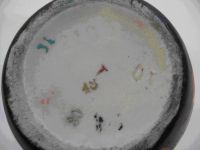In general, BIHL pottery is characterized on the bottom by:
- A back-stamp
- A model number
- Optionally, a size number
- Optionally, some additional miscellaneous marks or numbers
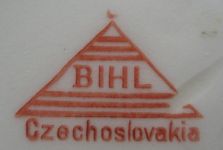
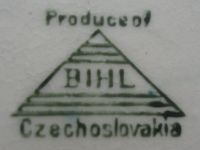
coming soon
coming soon
coming soon
coming soon
Sometimes the Czechoslovakia back-stamp (Czechoslovakia in a circle, without a hyphen) is printed in black on the bottom. In the book “Czechoslovakian Pottery – Czeching Out America” this back-stamp is listed as P603. A clear association with a pottery factory, e.g. the BIHL factory, is not possible, however. Sometimes, a back-stamp is found with the name Cechoslovakia, instead of Czechoslovakia. In the book “Czechoslovakian Pottery – Czeching Out America” this back-stamp is listed as P600.
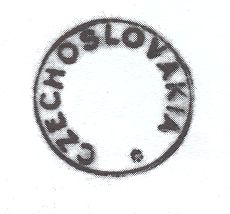
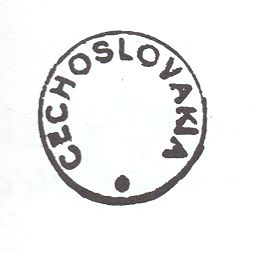
Sometimes the Made in Czecho-Slovakia back-stamp is printed in black or red on the bottom. In the book “Czechoslovakian Pottery – Czeching Out America” this back-stamp is indicated as P801. A clear association with a pottery factory, e.g. the BIHL factory, is not possible, however. Sometimes, a back-stamp is found with the name Made in Cechoslovakia, instead of Made in Czechoslovakia. In the book “Czechoslovakian Pottery – Czeching Out America” this back-stamp is listed as P811.
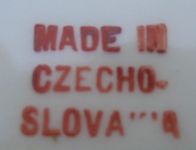
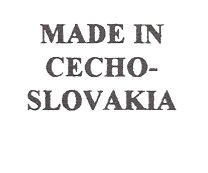
Sometimes the Erphila Czecho-Slovakia back-stamp is printed in black, red, or green on the bottom. In the book “Czechoslovakian Pottery – Czeching Out America” this back-stamp is indicated as P1401. Erphila was an import company owned by Theodore Ebeling and Frederick Reuss of Philadelphia, Pennsylvania (USA). Ebeling and Reuss emigrated in 1886 to the United States of America from Germany as teenagers. In 1886, they became partners with JEF Zeh who had a glassware and china firm. The company was known as Zeh, Ebeling & Reuss & Co. The company imported porcelain, earthenware, and ironstone from several Bohemian, Czechoslovakian factories and other European countries, including toys, dinnerware, and gift items. In 1900, Zeh withdrew from the company and it was then known as Ebeling & Reuss Co. It moved to Devon, Pennsylvania (USA). The company remained in the Ebeling & Reuss families. In 1988 the company went bankrupt. At that time, Ronald Rapelje joined the company. In 1992 Rapelje purchased the assets of the company and moved it to Allentown, Pennsylvania (USA).
Note that Ebeling & Reuss did NOT manufacture ceramics itself; they just imported pottery and replaced the manufacturers mark with their own. In literature it is not mentioned from which Bohemian or Czechoslovakian pottery factories they imported ceramics. The Ebeling & Reuss back-stamp is Erphila. The Erphila back-stamp is an abbreviation for Ebeling & Reuss Philadelphia. Their other mark is E&R, Inc.
Sometimes the ERPHILA ART POTTERY Czecho Slovakia back-stamp is printed in black, red, or green on the bottom. In the book “Czechoslovakian Pottery – Czeching Out America” this back-stamp is indicated as P1420.
Sometimes the Erphila Czecho-Slovakia back-stamp is printed in black, red, or green on the bottom. In the book “Czechoslovakian Pottery – Czeching Out America” this back-stamp is indicated as P1460. The pattern, in this case Oxford, is sometimes added to the back-stamp.
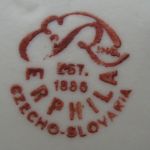
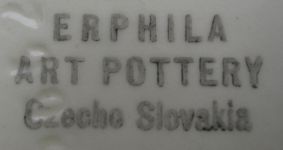
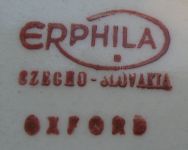
Sometimes the Registered
Celebrate Made in Czechoslovakia back-stamp is printed in black or green
on the bottom. In the book “Czechoslovakian Pottery – Czeching Out
America” this back-stamp is indicated as P2301.
A clear association with a pottery factory, e.g. the BIHL
factory, is not possible, however.
Sometimes the Celebrate
Registered Czechoslovakia back-stamp is found on the bottom. In the book
“Czechoslovakian Pottery – Czeching Out America” this back-stamp is
indicated as P2300.
Celebrate was an importer’s mark by the Borgfeldt Company of New York,
New York (USA). George Borgfeldt was born in 1833 in Meldorf (Germany).
In 1855 he immigrated to Nashville where he started a trading business
company in 1861. In 1881 he moved to New York where he started the
George Borgfeldt & Co trading company. Borgfeldt imported pottery from
several Bohemian and Czechoslovakian pottery factories, including the
former BIHL Company.
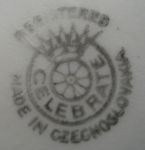
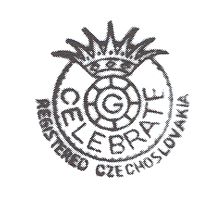
Sometimes the Trademark Coronet Czechoslovakia Registered back-stamp is printed in green on the bottom. In the book “Czechoslovakian Pottery – Czeching Out America” this back-stamp is indicated as P2500. A clear association with a pottery factory, e.g. the BIHL factory, is not possible, however. A more or less similar back-stamp has a less high crown in the back-stamp. In the book “Czechoslovakian Pottery – Czeching Out America” this back-stamp is indicated as P2501. Coronet was also an importer’s mark by the Borgfeldt Company of New York, New York (USA).
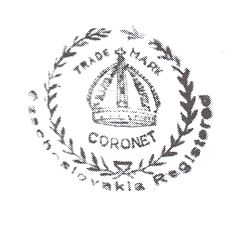
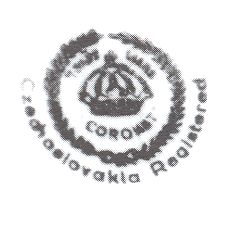
Sometimes the Produce of Czechoslovakia back-stamp is printed in black on the bottom. In the book “Czechoslovakian Pottery – Czeching Out America” this back-stamp is indicated as P6300. A clear association with a pottery factory, e.g. the BIHL factory, is not possible.
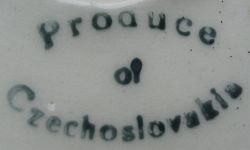
Sometimes the WIDO back-stamp is printed in black on the bottom. This back-stamp is NOT mentioned in the book “Czechoslovakian Pottery – Czeching Out America”. A clear association with a pottery factory, e.g. BIHL, is not possible.
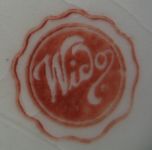
Sometimes the Eljeco Holland back-stamp is printed in black on the bottom. This back-stamp is NOT mentioned in the book “Czechoslovakian Pottery – Czeching Out America”. A clear association with a pottery factory, e.g. BIHL, is not possible.
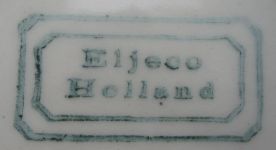
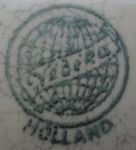
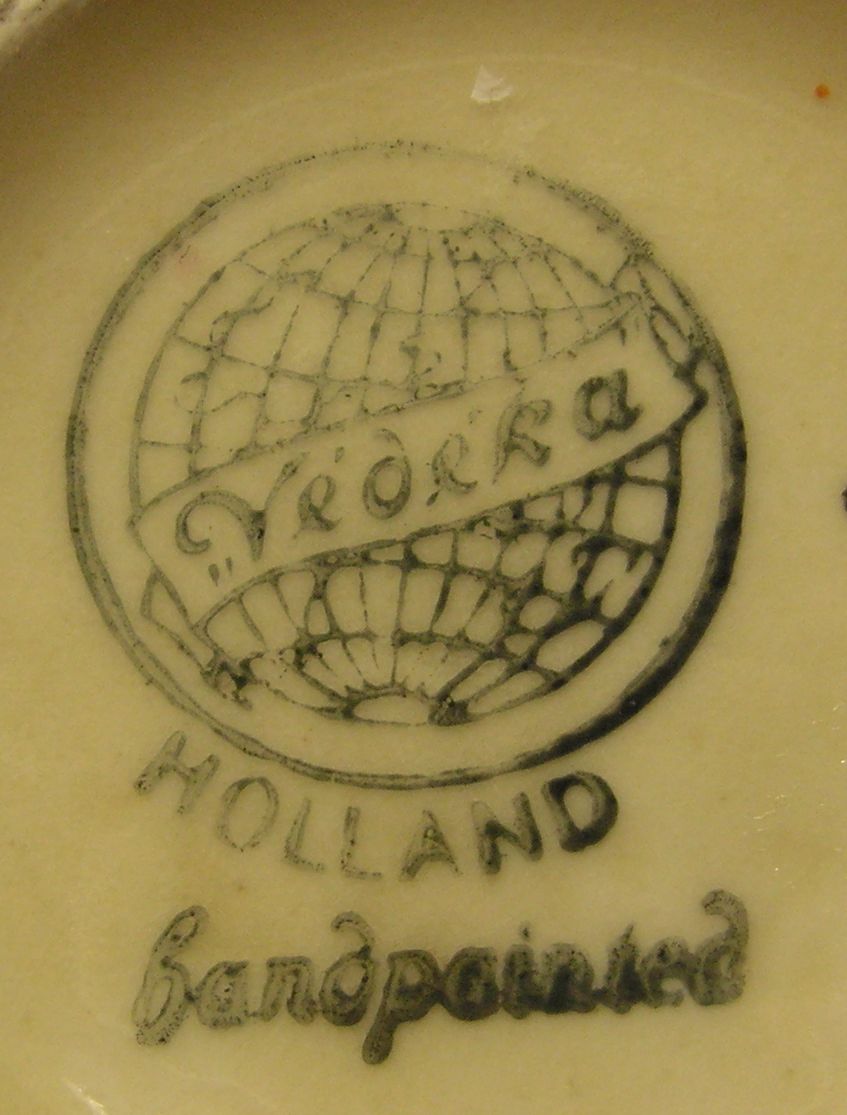
coming soon
coming soon
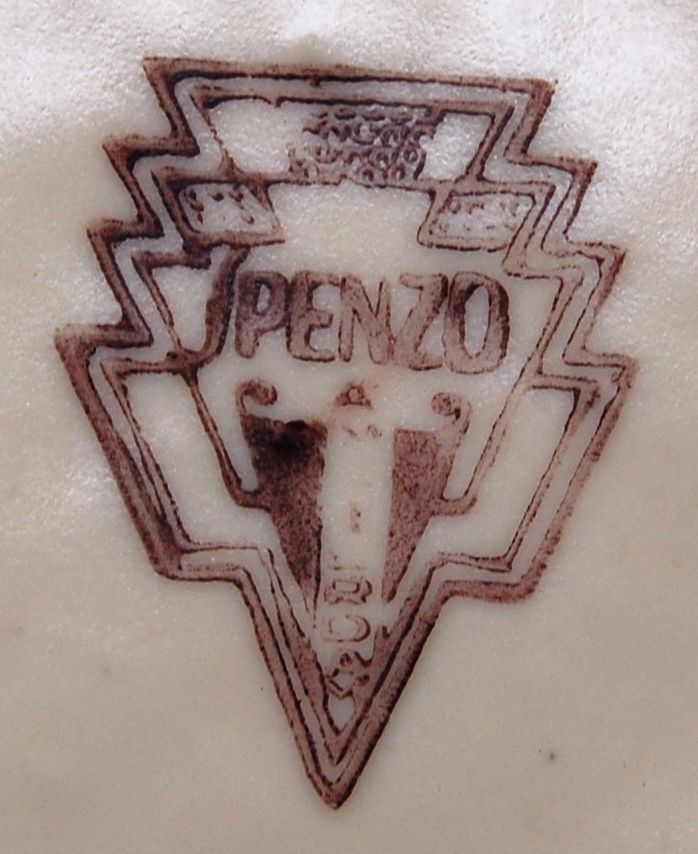
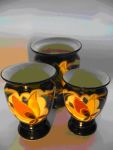
with different size number however.
